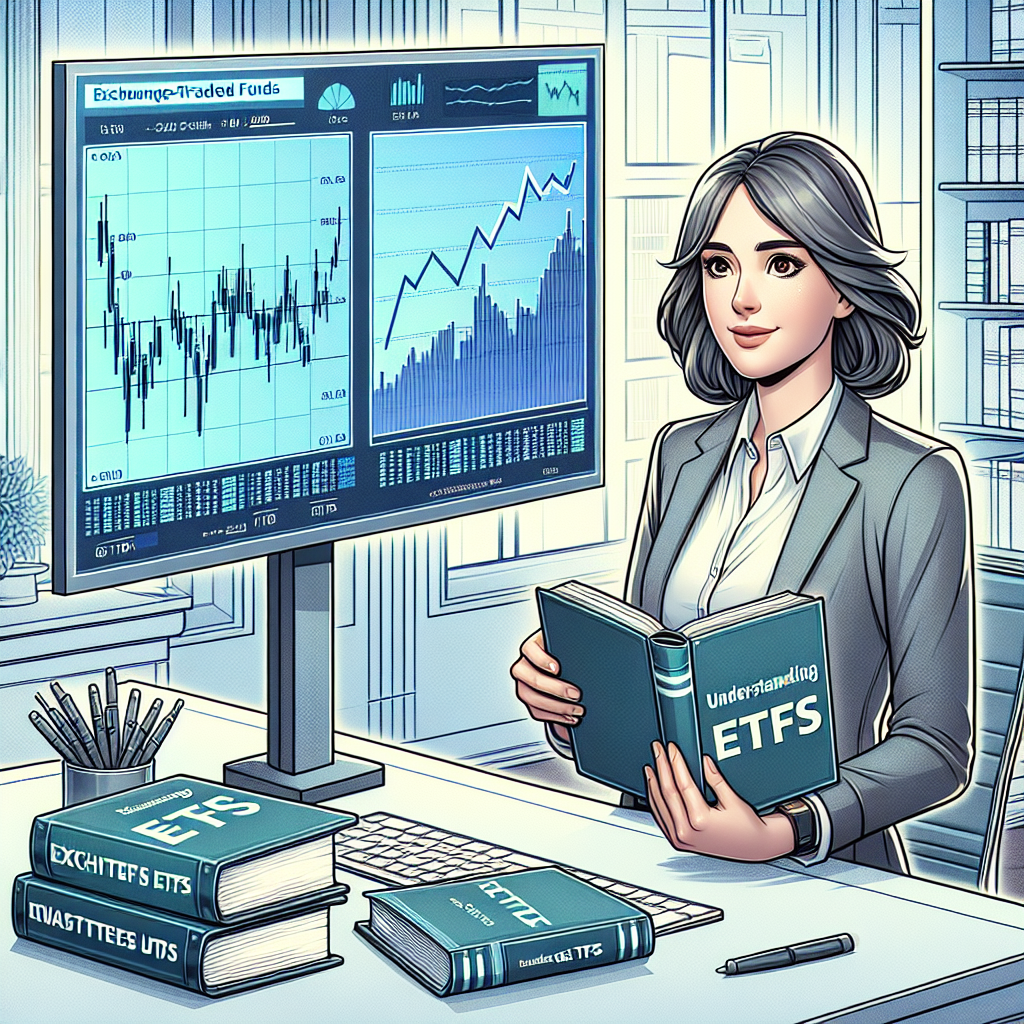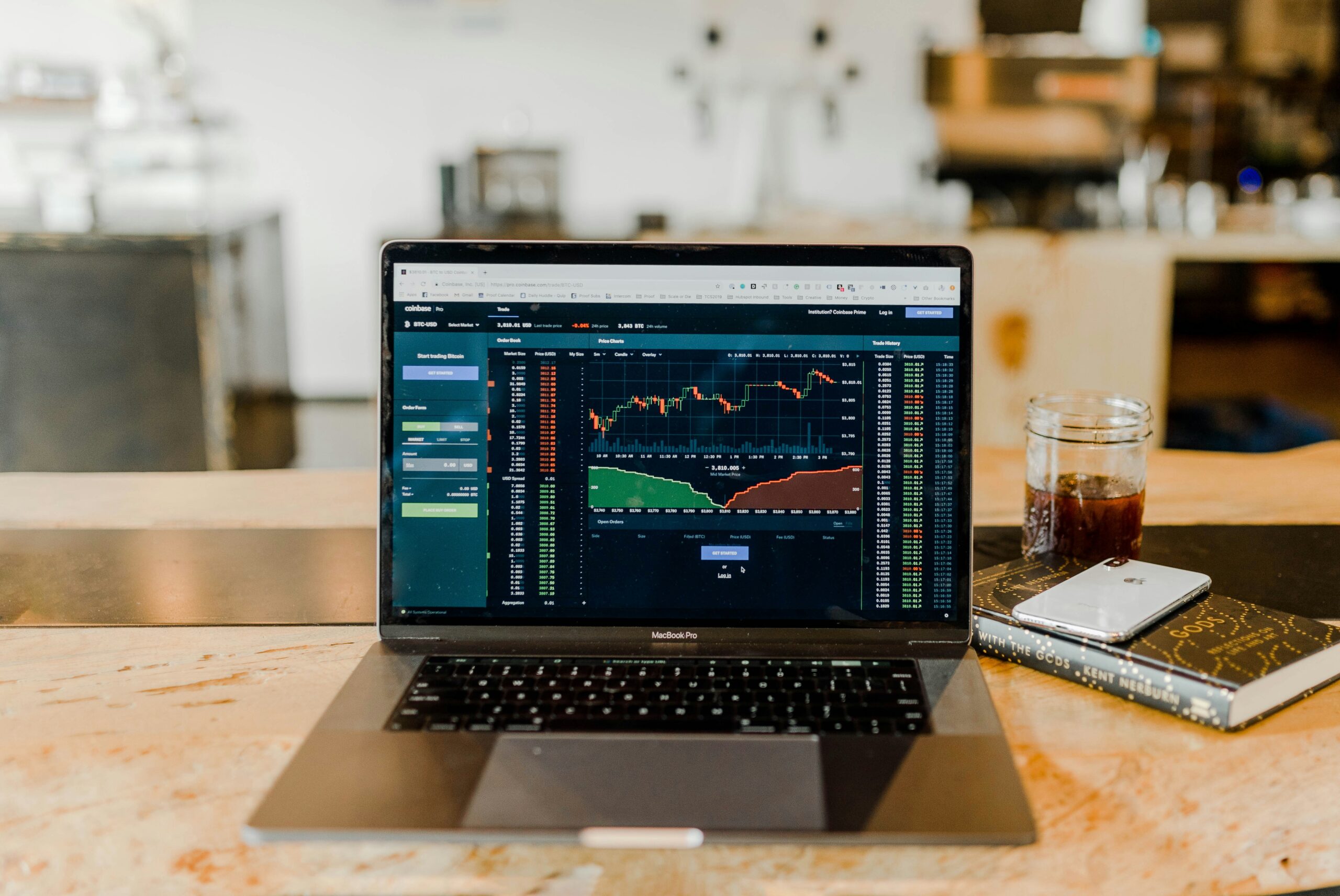
Exchange-Traded Funds (ETFs) are investment funds that trade on stock exchanges, similar to individual stocks. These funds hold a diversified collection of assets, such as stocks, bonds, or commodities, and they aim to track the performance of a specific index or sector. The structure of ETFs combines key characteristics of both traditional mutual funds and individual stocks, providing investors with a unique financial product that offers a range of benefits.
One of the defining features of ETFs is their ability to be traded throughout the day on stock exchanges. This intraday trading capability allows investors to buy and sell shares of ETFs at market prices that fluctuate in real-time, providing greater liquidity compared to mutual funds, which are only traded at the end of the trading day at their net asset value (NAV). This liquidity aspect is a significant advantage for investors looking to act quickly in response to market conditions.
ETFs are typically managed by professional fund managers who are responsible for maintaining the fund’s investment strategy. These managers purchase and sell underlying assets to ensure that the ETF continues to align with its designated index or sector. This professional management enhances the operational efficiency of the fund, allowing investors to benefit from the expertise of seasoned financial professionals.
Additionally, ETFs offer diversification, as they usually hold a wide array of securities within a single fund. This mitigates the risk associated with investing in individual stocks since the performance of an ETF is not solely contingent on the success of a single company. By spreading investments across multiple positions, ETFs can provide a balanced approach to asset allocation and help investors achieve their long-term financial goals.
Exchange-Traded Funds (ETFs) have gained immense popularity among investors due to their diverse offerings and strategic advantages. One of the primary reasons for this popularity is the variety of ETF types available in the market. Understanding each type’s characteristics can assist investors in making informed choices tailored to their financial goals.
Firstly, equity ETFs are designed to track a specific index, sector, or the entire stock market. For example, a Standard & Poor’s 500 ETF aims to replicate the performance of the S&P 500 Index, which consists of 500 large-cap U.S. companies. Investors might choose equity ETFs for growth potential and diversification across various stocks.
In addition to equity ETFs, there are bond ETFs that focus on a portfolio of bonds, providing investors with fixed-income exposure. For instance, a corporate bond ETF consists of various corporate bonds and aims to deliver regular income through interest payments. This type appeals to those seeking stability and income generation with lower risk compared to stocks.
Commodity ETFs are another relevant category, providing a way to invest in physical commodities like gold, silver, or oil. An example includes a gold ETF, which may either invest in physical gold bullion or gold futures contracts, allowing investors to gain exposure to commodity prices without the challenges of directly purchasing physical assets.
Sector and industry ETFs focus on specific segments of the economy, such as technology, healthcare, or energy. Investors can leverage these ETFs to capitalize on the performance of particular sectors, mitigating individual stock risk while aligning their investments with sector-specific trends.
Lastly, international ETFs grant investors access to foreign markets, diversifying their portfolios beyond domestic assets. For instance, an emerging markets ETF may include stocks from developing countries, allowing investors to benefit from rapid growth opportunities in those regions.
Investors interested in exchange-traded funds (ETFs) should first understand how to navigate the buying and selling process. ETFs are traded on major stock exchanges, similar to individual stocks, which allows investors to purchase shares throughout the trading day. The ability to trade ETFs in real-time creates opportunities for maximizing returns, regardless of market conditions.
To begin investing in ETFs, obtaining a brokerage account is essential. This account serves as the gateway for executing trades and managing investments. When choosing a brokerage firm, consider factors such as fees, trading platform usability, customer service, and any educational resources offered. Many brokerages provide commission-free trading for certain ETFs, which can significantly reduce overall investment costs.
Once the brokerage account is established, investors can start buying and selling ETFs. Familiarity with market orders and limit orders is crucial. A market order is executed at the current market price, ensuring immediate transaction completion but potentially resulting in a price that differs from the last quoted price. Conversely, a limit order allows investors to set a specific price at which they are willing to buy or sell an ETF. This option provides greater control over the transaction price, although it may result in the order remaining unfilled if the market does not reach the specified price.
Practical tips for executing ETF trades include carefully researching the specific funds being considered, analyzing performance metrics, and staying informed about market trends. Additionally, utilizing tools and resources provided by the chosen brokerage can enhance decision-making capabilities.
By understanding the processes involved in buying and selling ETFs, as well as the different types of orders, investors can confidently engage in the market and build a well-diversified portfolio. As with any investment, thorough research and a clear strategy are vital for success.
When investing in exchange-traded funds (ETFs), it is essential to understand the various expenses and fees associated with them. These costs can impact overall returns and, therefore, influence investment decisions. Common types of fees include management fees, expense ratios, and trading costs.
Management fees are charged by the fund provider for managing the ETF’s portfolio. These fees compensate the investment manager for their expertise in selecting securities that align with the fund’s objectives. Typically expressed as a percentage of the fund’s assets, management fees can vary significantly among different ETFs and should be carefully considered when evaluating a fund’s potential performance.
The expense ratio is another crucial fee. This metric combines all the operational costs of running an ETF, including management fees, administrative expenses, and other costs. It reflects the percentage of a fund’s assets used for operating expenses and is an important number for investors to examine. A lower expense ratio tends to suggest a cost-effective fund, but investors should also consider the quality of the fund’s management and performance track record in conjunction with the fees.

In addition to management fees and expense ratios, trading costs represent another essential aspect of ETF expenses. These costs are associated with buying and selling shares on an exchange, usually reflected in the bid-ask spread. Investors may face additional brokerage commissions depending on their platform, which can further influence the cost of trading ETFs. It is prudent to evaluate these trading costs, as they can accumulate over time, particularly for active traders.
Ultimately, assessing ETF expenses and fees is vital for making informed investment decisions. Investors should strive to compare these costs across similar funds to ensure alignment with their investment goals and to maximize their potential returns.
Exchange-Traded Funds (ETFs) have gained considerable popularity among both novice and experienced investors for several compelling reasons. One of the primary benefits of investing in ETFs is their low expense ratios. Compared to mutual funds, which typically charge higher management fees, most ETFs maintain considerably lower costs. According to recent market studies, the average expense ratio for active mutual funds is approximately 1% or more, while many ETFs can be found with expense ratios as low as 0.1%. This can lead to significant savings over time, allowing investors to retain more of their returns.
Another key advantage of ETFs is their tax efficiency. Unlike traditional mutual funds that may distribute capital gains to investors, ETFs often generate fewer taxable events due to their unique creation and redemption mechanism. This characteristic helps minimize the tax burden on investors, potentially enhancing post-tax returns. For example, a report by the Investment Company Institute suggests that ETF investors generally experience lower tax liabilities, thus reinforcing the tax-efficient nature of these investment vehicles.
The transparency associated with ETFs also serves as a notable benefit. Investors can easily access information about the underlying assets and their composition, which allows for better-informed investment decisions. Many ETF providers publish daily updates on their holdings, giving investors the ability to monitor their investments closely. This level of transparency can foster trust and facilitate strategic portfolio adjustments when necessary.
Finally, ETFs offer the advantage of being traded throughout the day at market prices, unlike mutual funds which are only transacted at the end of the trading day. This flexibility allows investors to respond quickly to market changes, enhancing their ability to optimize entry and exit points. Real-world examples indicate that improved price execution can lead to better overall investment outcomes, making ETFs an appealing choice for those looking to implement a more dynamic investment strategy.
Investing in Exchange-Traded Funds (ETFs) carries potential risks and challenges that investors should carefully consider. One of the primary risks associated with ETFs is market risk. This refers to the possibility of losing value due to fluctuations in the broader market. As ETFs are traded on stock exchanges, their prices can be impacted by overall market movements, which may not align with the performance of the underlying assets. Consequently, it is crucial for investors to be aware of market conditions and how they can influence their ETFs’ performance.
Another challenge is tracking error, which occurs when an ETF does not perfectly replicate the performance of its benchmark index. Tracking error can arise from various factors, including management fees, trading costs, and the methodology used to construct the ETF. A larger tracking error can significantly affect the expected return on investment, making it essential for investors to monitor the ETF’s performance relative to its index.
Liquidity risk is also noteworthy. While many ETFs boast high trading volumes, some may have low liquidity, especially those that track niche markets or less popular segments. Low liquidity can lead to wider bid-ask spreads, which may hinder an investor’s ability to buy or sell shares at desired prices, further impacting the profitability of the investment.
Understanding the underlying assets of an ETF is imperative for mitigating these risks. Investors should conduct thorough research on the sectors, industries, and geographic components included in the ETF. This knowledge will aid in assessing potential risks associated with specific markets or asset classes. Additionally, employing strategies such as diversification, regular portfolio reviews, and aligning investments with long-term financial goals can further assist in risk management. By being proactive and informed, investors can navigate the complexities of ETF investing more effectively.
Selecting the appropriate Exchange-Traded Fund (ETF) requires a comprehensive understanding of several key factors that align with your investment goals. The first step in this process is to examine the ETF’s performance history. Analyzing past performance can provide insight into how an ETF has reacted to market fluctuations, but it’s crucial to remember that past performance does not guarantee future results.
Next, consider the expense ratio associated with the ETF. This ratio represents the annual management fees expressed as a percentage of the fund’s average assets. Lower expense ratios can significantly enhance your long-term returns, as high fees will erode your investment gains over time. Therefore, it is essential to compare the expense ratios of similar ETFs before making a final decision.
Another vital factor to evaluate is asset allocation. This refers to how the ETF’s assets are distributed among various sectors, regions, and asset classes. Understanding the asset allocation can help you determine whether the ETF matches your risk tolerance and investment strategy. For instance, if you are looking for growth, you might focus on equity-heavy ETFs, while conservative investors may prefer those with fixed-income securities.
Risk profile is also an essential criterion in the ETF selection process. Each ETF carries its inherent risks, which can vary based on the underlying assets and market conditions. It is advisable to assess your risk appetite and ensure that the chosen ETF aligns with your comfort level regarding potential losses and gains.
Finally, conducting thorough research and, when necessary, seeking professional financial advice can help clarify your investment choices. Engaging with a financial advisor can provide additional insights tailored to your unique financial situation, ensuring a more informed investment decision.
Investing in Exchange-Traded Funds (ETFs) offers various advantages, one of which pertains to tax efficiency. Understanding the tax implications associated with ETFs is critical for investors, particularly beginners. One key area to consider is capital gains distributions. Unlike mutual funds, where capital gains are often distributed annually, ETFs tend to generate fewer taxable events because they utilize an in-kind redemption process. This mechanism allows the fund to avoid selling securities, thereby minimizing realized capital gains that would typically be passed on to investors during the year.
Additionally, the tax efficiency of ETFs can be largely attributed to their structure. When an investor buys or sells ETF shares on an exchange, they engage directly with other investors rather than the fund itself. This lessens the need for the fund manager to buy or sell underlying assets, which, in a mutual fund context, could trigger capital gains taxes. Consequently, ETFs generally allow for greater control over tax timing, giving investors the flexibility to realize capital gains or losses according to personal financial strategies.
Moreover, it is essential for investors to comprehend the specific structure of an ETF, as various types of ETFs may have different tax implications. For instance, bond ETFs may distribute interest income that is subject to taxation, while international ETFs might expose investors to foreign tax implications. Understanding these nuances is important, as they can significantly impact net returns after taxes. In light of these factors, optimizing tax outcomes through strategic ETF investments involves careful consideration of the fund’s tax treatment, distribution patterns, and the investor’s overall financial picture.
Exchange-Traded Funds (ETFs) have emerged as a popular investment vehicle, providing several benefits that appeal to both novice and experienced investors. Throughout this guide, we have examined the fundamental concepts that underpin ETFs, including their structure, advantages, and challenges associated with investing. By their design, ETFs combine the flexibility of stock trading with the diversified nature of mutual funds, enabling investors to gain exposure to a wide range of asset classes, including stocks, bonds, and commodities.
One of the primary advantages of ETFs is their cost-effectiveness. Typically, they exhibit lower expense ratios compared to mutual funds, which can lead to higher net returns for investors over time. Additionally, the trading flexibility inherent in ETFs allows investors to buy and sell throughout the trading day, enabling tactical adjustments in response to market conditions. Moreover, ETFs offer diversification, which is a vital strategy for risk management, as investing in a range of securities can help mitigate the impact of underperforming assets.
However, it is essential to recognize that investing in ETFs also comes with certain risks. Market fluctuations can affect the performance of ETFs, and investors must be diligent in understanding the underlying assets and sectors represented within an ETF. Furthermore, factors such as tracking error, liquidity, and the potential for management fees should be carefully considered. Therefore, informed decision-making is paramount when venturing into ETF investments.
In summary, understanding ETFs is crucial for anyone looking to invest wisely in the financial markets. By grasping the basic characteristics, advantages, and potential challenges of ETFs, investors can confidently explore this investment option to build a well-rounded portfolio that aligns with their financial goals and risk tolerance. As the market evolves, continuous education on ETFs and investment strategies will enhance an investor’s ability to make sound financial choices.
Looking to advertise, promote your brand, or explore partnership opportunities?
Reach out to us at
[email protected]












Chose where you want to study, and we will let you know with more updates.